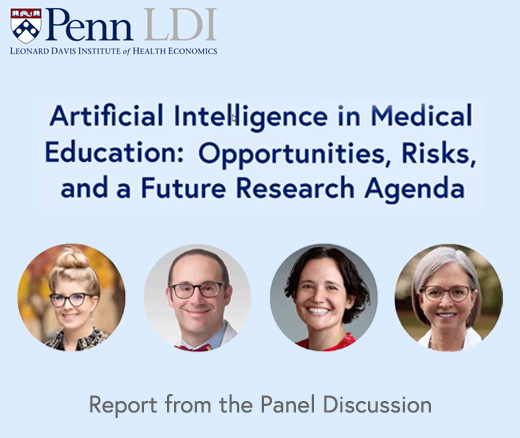
New National Study Finds Doctors Paid Less for Treating Black and Hispanic Patients
Physicians Were Paid About 10% Less for Visits Involving Black and Hispanic Patients, With Pediatric Gaps Reaching 15%, According to a First-of-Its-Kind LDI Analysis
Blog Post
More than one-third of all Americans age 12 and over remain unvaccinated for COVID-19. The latest Kaiser Family Foundation poll indicates that hesitancy and acceptance of these vaccines varies by geographic, sociodemographic, and cultural factors. While we often think about vaccine hesitancy on an individual level, these individuals belong to communities that respond to the COVID-19 vaccine in very different ways. A new Twitter analysis led by LDI Senior Fellow Sharath Chandra Guntuku offers tantalizing clues about differences in how certain communities talk about the pandemic, and may help target public health messages to improve vaccine acceptance.
The American Communities Project (ACP) categorized U.S. counties into 15 distinct community types. Using this typology, Guntuku and team analyzed a random sample of more than 78 million vaccine-related tweets posted between December 1, 2020, and February 28, 2021. They found significant differences in vaccine topics in eight of these communities, as shown in Figure 1.

The topics reveal different community concerns (at least among those who tweet). For example, counties in the African American South posted about issues of trust, hesitancy, and history, while Hispanic Centers posted their concerns around food and water. Evangelical Hubs posted about Operation Warp Speed and thanking God. Urban Suburbs posted about equitable distribution in communities, Exurbs posted about the 2020 election, and Rural Middle America posted about nursing homes and long term senior resident facilities. College towns talked about in-clinic vaccinations near universities, while Graying America posted about personal choice and freedom.
These differences in Twitter discourse seem to be associated with different vaccination rates in these communities, as shown in Figure 2. Urban Suburbs, Middle Suburbs, and Big Cities lead with more than 35% of the population being fully vaccinated, while less than 25% of people in Evangelical Hubs and the African American South are fully vaccinated. Hispanic Centers have the lowest vaccination rates at less than 15%, as of June 2021.

Understanding these community differences is essential, as public health officials target increasingly vaccine-hesitant people in the U.S. These findings can be used to develop precision messaging about the COVID-19 vaccine to address community concerns, with the goal of accelerating progress toward ending the pandemic.
The study, Twitter Discourse Reveals Geographical and Temporal Variation in Concerns About COVID-19 Vaccines in the United States, was published in Vaccine on July 5, 2021. Authors include Sharath Chandra Guntuku, Alison M. Buttenheim, Garrick Sherman, and Raina M. Merchant.

Physicians Were Paid About 10% Less for Visits Involving Black and Hispanic Patients, With Pediatric Gaps Reaching 15%, According to a First-of-Its-Kind LDI Analysis

A New Review Finds Hospital Mergers Raise Prices Without Improving Care, and Urges Regulators to Stop Accepting Quality Claims to Justify Consolidations

CMS’s Main Risk Adjustment Method Underestimates Rural Patients’ Health Risks, LDI Fellows Show, Potentially Reducing Access to Care in the Heartland

Experts at Penn LDI Panel Call for Rapid Training of Students and Faculty

A Proven, Low-Risk Treatment Is Backed by Major Studies and Patient Demand, Yet Medicare and Insurers Still Make It Hard To Use

New Study From LDI and MD Anderson Finds That Black and Low-Income, Dually Eligible Medicare Patients Are Among the Most Neglected in Cancer Care